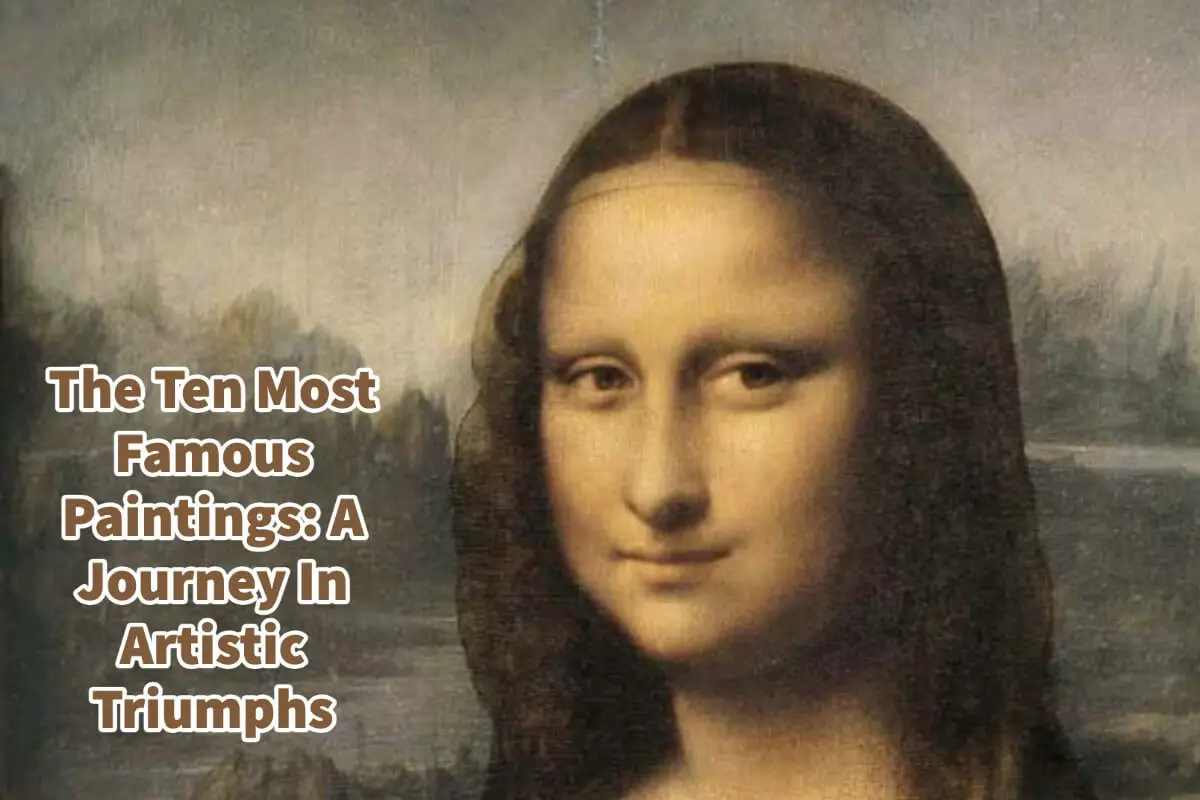Art is one of these great things that help us to be able to see and learn more about ourselves and the world around us. But even for those that do not love art, there are some essential paintings that many people can still recognize.
We have gone through the list of all the important paintings and listed what we see as the 10 most important ones. Many on this list are very famous as the Mona Lisa. Others include one of my favorite American paintings of the American Gothic. Read on as we explore what we see as ten of these most essential paintings ever created.
Table of Contents
- 10 Most Famous Paintings And The Artists Who Created Them
- “Mona Lisa” by Leonardo da Vinci (1503)
- “The Starry Night” by Vincent Van Gogh (1889)
- “The Last Supper” by Leonardo da Vinci (1498)
- “The Scream” by Edvard Munch (1893)
- “The Persistence of Memory” by Salvador Dali (1931)
- “Guernica” by Pablo Picasso (1937)
- “Girl With a Pearl Earring” by Johannes Vermeer (1665)
- “The Night Watch” by Rembrandt van Rijn (1642)
- “American Gothic” by Grant Wood (1930)
- “The Birth of Venus” by Sandro Botticelli (1485)
- Related Questions
10 Most Famous Paintings And The Artists Who Created Them
Every brush stroke, blend of color, and nuanced texture on a canvas encapsulates a story, emotion, or statement. Over centuries, artists have expressed their creative prowess in countless works of art.
However, some paintings have captured the world’s attention and earned a place in the annals of history. Here are the ten most famous paintings, their creators, their significance, and the stories they tell.
“Mona Lisa” by Leonardo da Vinci (1503)

Arguably the most famous painting in the world, the Mona Lisa’s enigmatic smile has intrigued viewers for centuries. Leonardo da Vinci’s pioneering use of sfumato, a technique of blurring the lines between objects, renders Mona Lisa’s expression elusive and captivating.
Its notoriety extends beyond art history into pop culture, signifying the pinnacle of artistic achievement. The Mona Lisa is one of the most viewed paintings in the world.
“The Starry Night” by Vincent Van Gogh (1889)
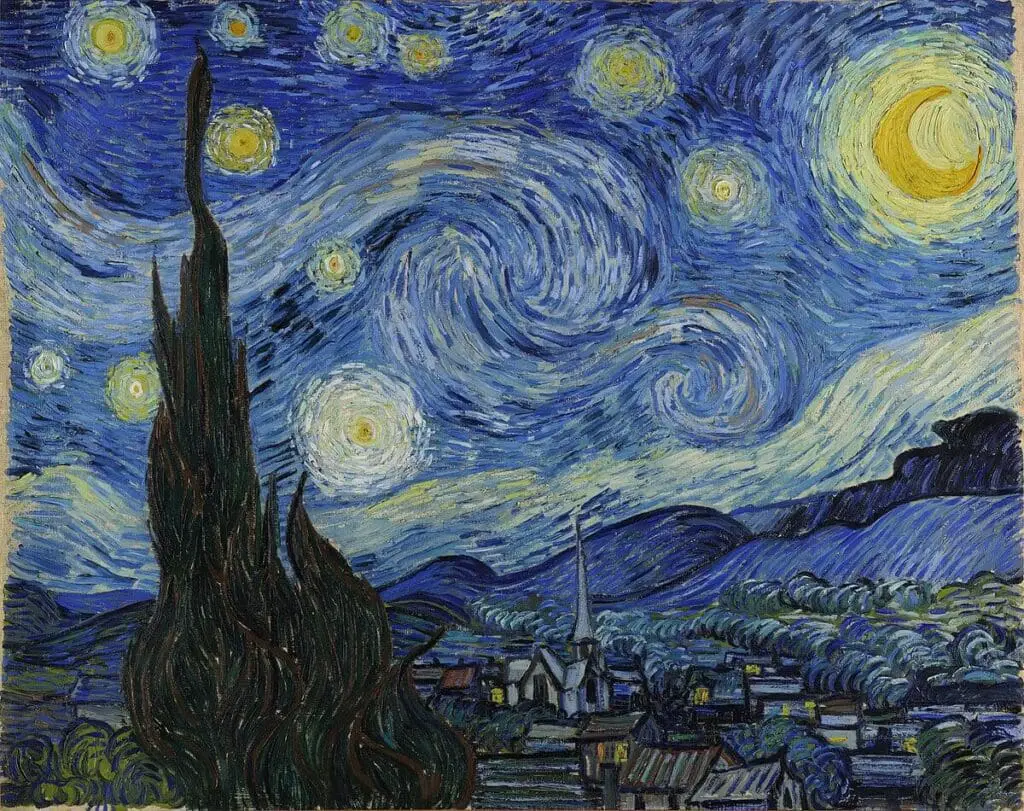
Painted from the window of his asylum room, Van Gogh’s swirling stars and luminous moon against the night sky exemplify the artist’s signature impasto style. The piece showcases the raw emotional intensity Van Gogh is renowned for, resonating with many as a testament to the human condition’s struggles and beauty.
Its widespread fame is a testament to its emotional resonance and distinct visual style.
“The Last Supper” by Leonardo da Vinci (1498)
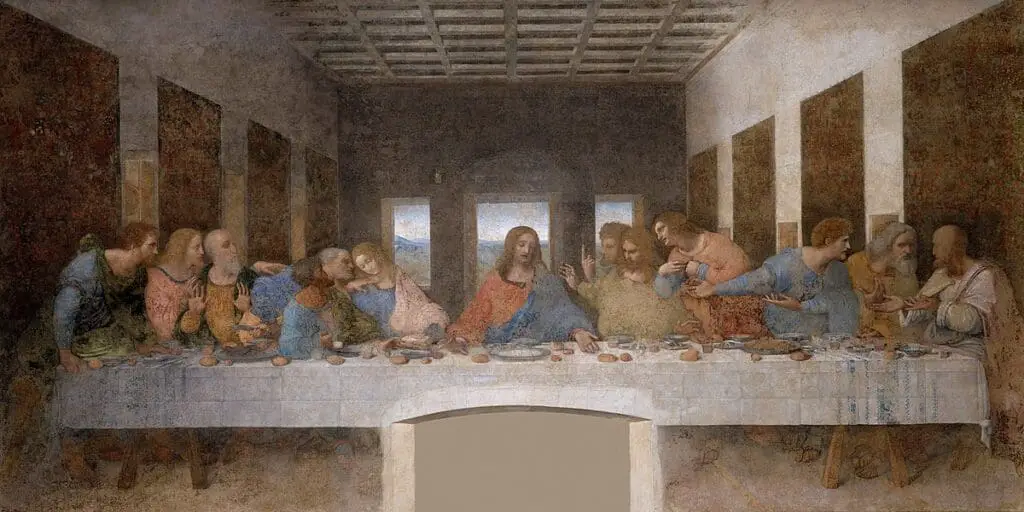
Leonardo da Vinci has two masterpieces on the list of the top ten. Da Vinci’s mastery is evident in this mural, which elegantly depicts the emotional complexity of Christ’s final meal with his disciples.
This piece is significant for its profound religious context and for introducing linear perspective, an innovation that has immensely influenced Western art. It is also one of my favorite religious pieces of art.
“The Scream” by Edvard Munch (1893)

Perhaps the most powerful visual depiction of angst and existential dread, Munch’s “The Scream” captures an emotionally charged moment against a backdrop of vibrant, chaotic colors.
Its status as a cultural icon is due to its encapsulation of a universally relatable human emotion – anxiety.
“The Persistence of Memory” by Salvador Dali (1931)
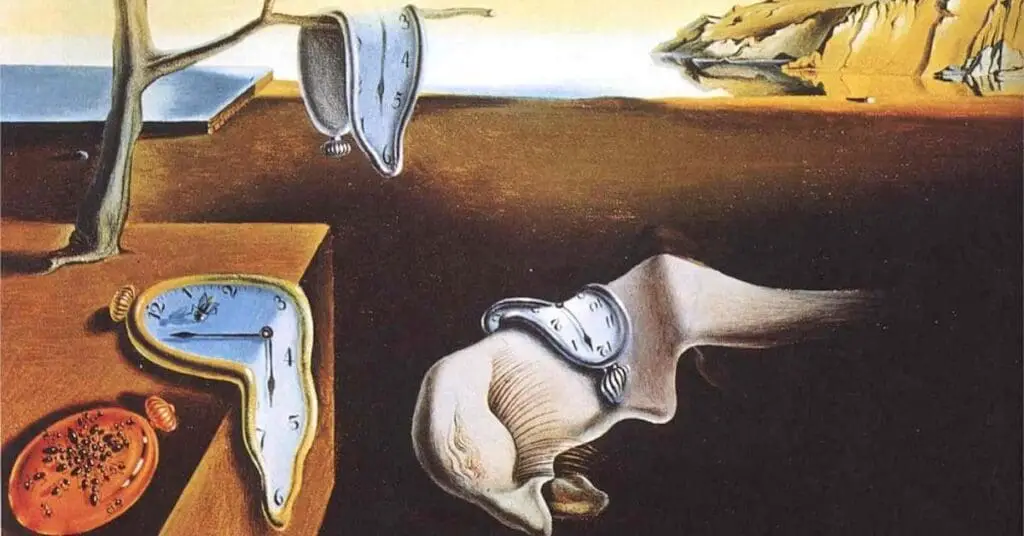
Dali’s Surrealist masterpiece, with its melting clocks, barren landscape, and disjointed objects, explores time’s fluidity and the surreal nature of the subconscious.
This painting’s worldwide recognition stems from its distinctive imagery and role epitomizing the Surrealist movement.
“Guernica” by Pablo Picasso (1937)
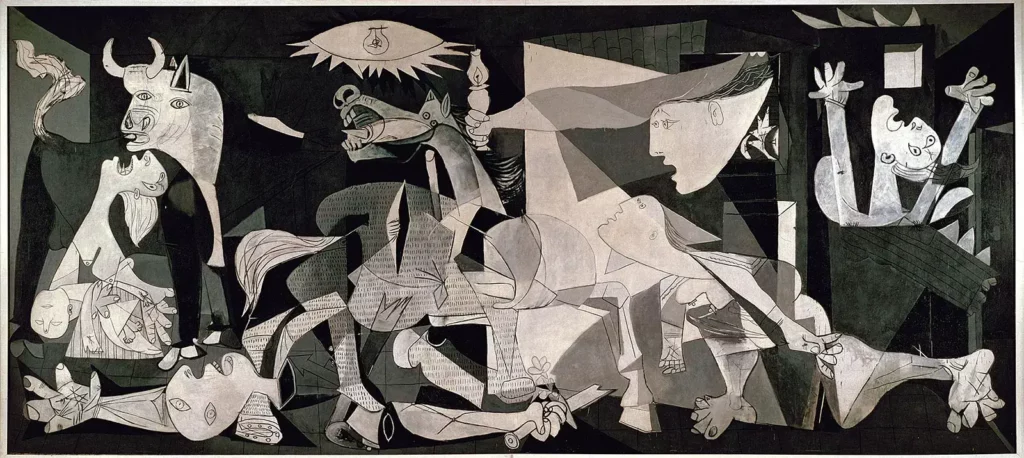
Picasso’s large-scale monochrome mural captures the horrors and chaos of the bombing of Guernica during the Spanish Civil War. Picasso’s unique Cubist style and the potent anti-war message have made this work a profound symbol of conflict atrocities.
Even today, this painting is one of the most essential anti-war paintings.
“Girl With a Pearl Earring” by Johannes Vermeer (1665)
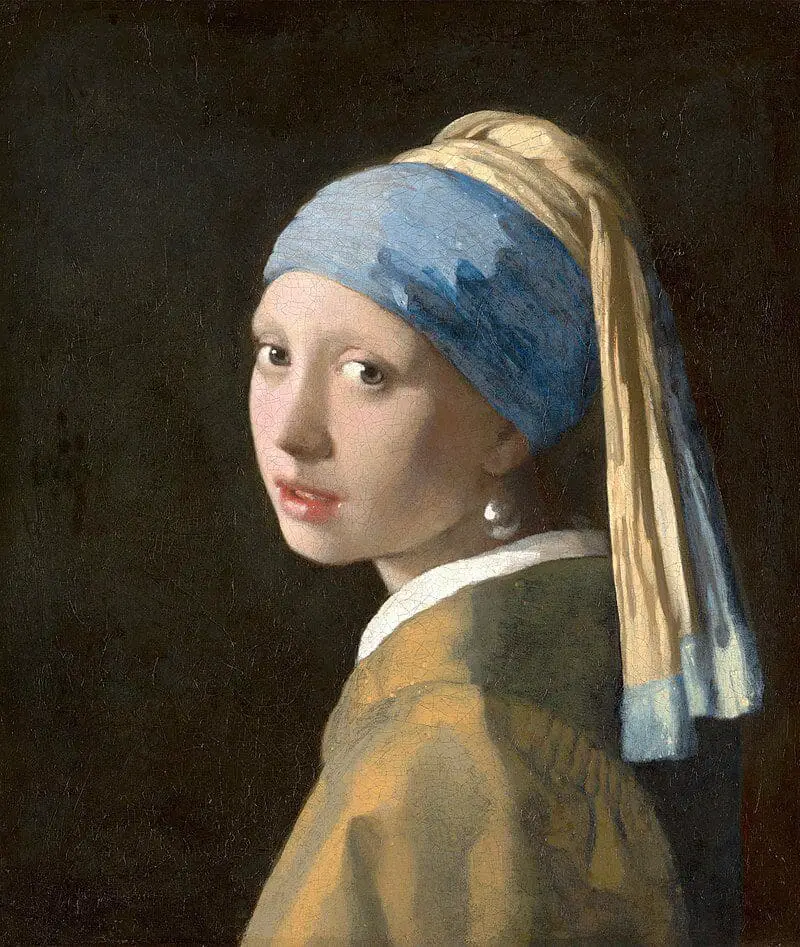
Often referred to as the ‘Dutch Mona Lisa,’ Vermeer’s masterpiece is renowned for its intricate play of light and shade and the subject’s captivating gaze. The painting’s fame stems from its detailed portrayal of a seemingly mundane moment and its remarkable use of color.
“The Night Watch” by Rembrandt van Rijn (1642)
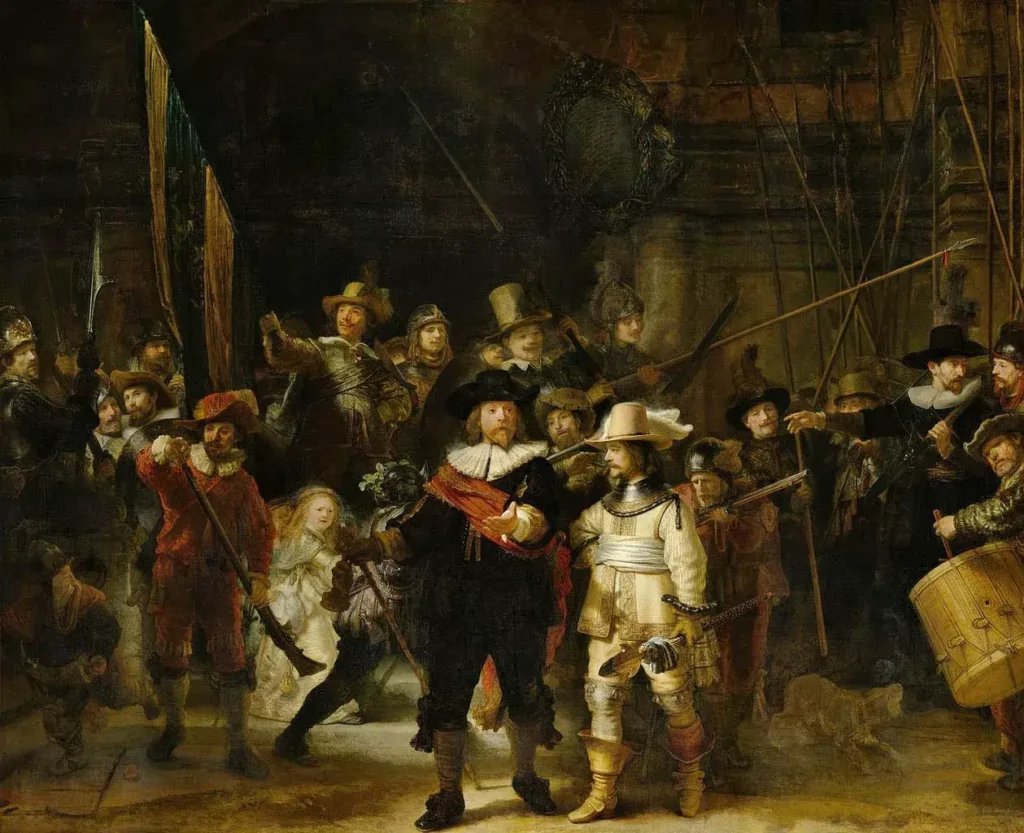
A masterpiece of Baroque art, “The Night Watch” is a large-scale group portrait of a militia. Its unique composition, dramatic use of light and shadow (chiaroscuro), and life-like portrayal of its subjects have contributed to its status as one of the most famous works of the Dutch Golden Age.
“American Gothic” by Grant Wood (1930)

An iconic image of American art, “American Gothic,” showcases a farmer and his wife standing in front of a house with Gothic-style windows. It’s renowned for its intricate detail, stark symbolism, and representation of the Midwestern character.
The painting’s status as a cultural icon rests upon its nuanced exploration of American values and identity.
“The Birth of Venus” by Sandro Botticelli (1485)
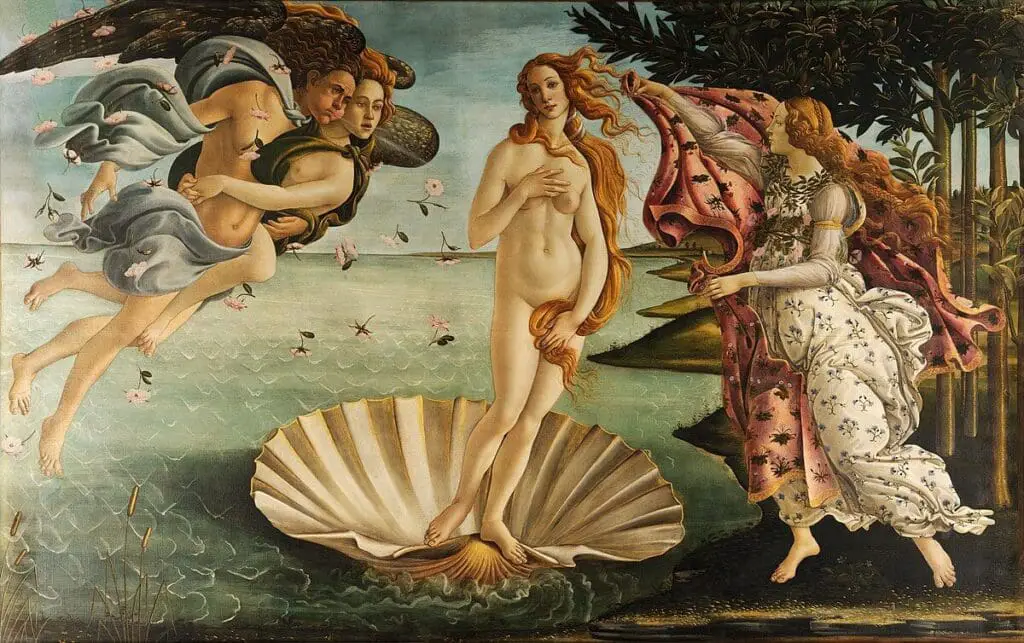
This painting is an ode to the beauty of the goddess Venus as she emerges from the sea as a fully grown woman. Botticelli’s masterpiece, characterized by its gentle, flowing lines and ethereal beauty, has become synonymous with the Italian Renaissance.
Its fame and importance are a testament to its embodiment of the humanistic values of the period.
Each famous painting offers a window into the epoch it emerged from, the artist’s perspective, and humanity’s shared emotions and experiences. Leonardo da Vinci’s “Mona Lisa” and “The Last Supper” speak to the artist’s innovative techniques and deep understanding of human psychology. Van Gogh’s “The Starry Night” and Munch’s “The Scream” encapsulate the artists’ emotional realities, inviting viewers to share their experiences.
Salvador Dali’s “The Persistence of Memory” and Picasso’s “Guernica” use distinctive visual languages to question the nature of reality and the human experience. Vermeer’s “Girl With a Pearl Earring” and Botticelli’s “The Birth of Venus” capture moments of beauty and transcendence, drawing viewers into their captivating worlds.
Rembrandt’s “The Night Watch” showcases the artist’s ability to breathe life into his subjects, creating a scene teeming with energy and drama. Grant Wood’s “American Gothic,” with its stark depiction of American rural life, prompts introspection about American identity.
These paintings are not only aesthetically pleasing or intriguing, they also mark significant moments in the evolution of artistic styles and techniques, from the pioneering use of perspective in the Renaissance to the exploration of the subconscious in Surrealism.
Moreover, these works have transcended their origins to become symbols recognized and understood worldwide. They’ve inspired countless other works, provoked thought and discussion, and brought millions to museums to witness their power firsthand.
They hold a mirror to society, reflecting our past, our emotions, our struggles, our achievements, and our hopes for the future.
They are timeless, enduring testaments to human creativity and expression. This is what makes them part of the top ten, what makes them essential, and why they continue to fascinate us today.
So, the next time you gaze at one of these masterpieces, remember: you’re not just looking at a painting; you’re experiencing a piece of our shared human history.
Anita Louise Art is dedicated to art education, great artists, and inspiring others to find and create their art. We love art that uplifts and inspires. #ArtToMakeYouSmile! #ArtToMakeYouHappy!
If you want to see any of my art, you can find out more by clicking here. If you are interested in what inspires me and my paintings, you can discover more by clicking here.
We have a free newsletter and would love you to be part of our community; you can subscribe to the newsletter by clicking here. If you have any questions, I would be happy to talk to you. You can reach me, Anita, by clicking here.
Subscribe to our Anita Louise Art YouTube Channel with great videos and information by clicking here.
Join us for our podcast “5 Minutes With Art.” Spend 5 minutes a week with us to discover and learn about great art and artists. You can find out more about our podcast by clicking here.
Related Questions
What Was The Focus Of Renaissance Art?
Renaissance art focused on the classics of Greek and Rome, humanist philosophy, and the study of the human figure. Realism was also an essential part of renaissance art. The great artists of the Renaissance also became great anatomists and studied human beings.
By clicking here, you can learn more by reading What Was The Focus Of Renaissance Art?.
What Is The Importance Of Art From The Renaissance Period?
Renaissance art is essential as it was a time of rebirth and discovery. Artists like Leonardo da Vinci, Michelangelo, and Raphael were at the forefront of that change, creation, and discovery. Renaissance art has influenced art and artists for many centuries and continues to influence artists today.
By clicking here, you can learn more by reading What Is The Importance Of Art From The Renaissance Period?.
21 Top Renaissance Artists And Their Works Of Art
When we speak of top Renaissance artists, we think of the trinity of artists like Leonardo da Vinci, Michelangelo, and Raphael. But besides these three artists, many other influential Renaissance artists remain essential.
By clicking here, you can learn more by reading 21 Top Renaissance Artists And Their Works of Art.

